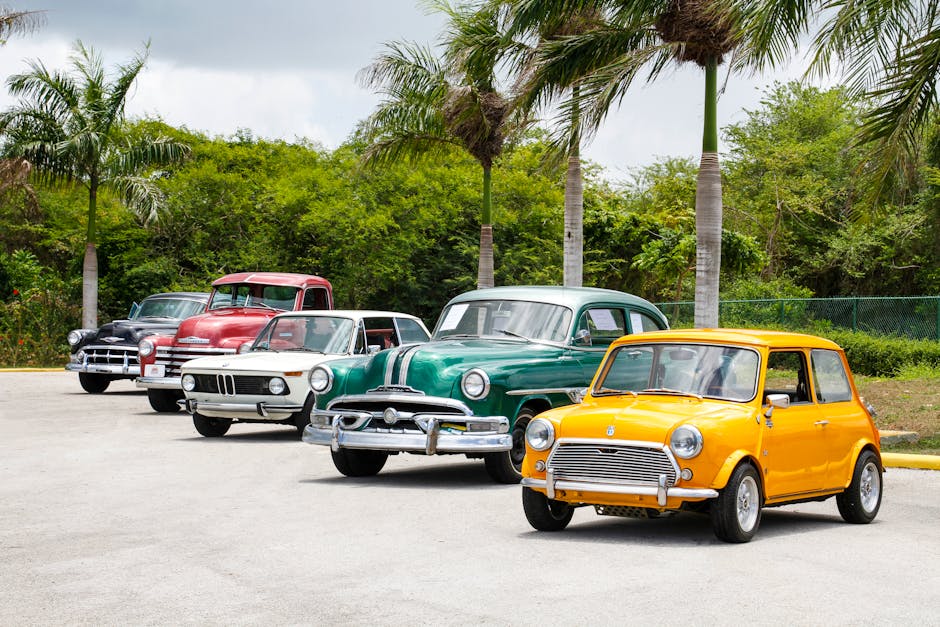DIY Guide: Installing Retro Parts on Your Classic Automobile

Restoring a classic automobile to its former glory can be a rewarding project for car enthusiasts. One of the key aspects of this restoration process is installing retro parts that not only enhance the vehicle's aesthetic appeal but also ensure it runs smoothly. This guide will cover the essential steps and considerations for installing retro parts on your classic car, providing both practical advice and technical insights.
Identifying and Sourcing Retro Parts
Before diving into the installation process, it is crucial to identify the specific retro parts needed for your classic automobile. Start by conducting a thorough assessment of your vehicle's current condition and making a list of parts that require replacement or upgrading. These may include engine components, exterior trims, interior fittings, or even vintage accessories.
Once you have identified the necessary parts, sourcing them becomes the next step. There are several avenues to explore when looking for retro parts:
- Specialty Stores: Many stores specialize in classic car parts and often carry a wide range of retro components.
- Online Marketplaces: Websites like eBay and Craigslist can be treasure troves for vintage car parts, offering both new and used options.
- Car Shows and Swap Meets: Attending events dedicated to classic cars can provide opportunities to find rare parts and connect with other enthusiasts.
- Automobile Clubs: Joining a club focused on your specific car model can be invaluable for locating hard-to-find parts through member networks.
Preparing Your Vehicle for Installation
Preparation is key to a successful retro part installation. Begin by thoroughly cleaning the areas where the new parts will be installed. This ensures that no dirt or grime interferes with the installation process. Use appropriate cleaning agents and tools specific to the materials involved.
If you're replacing major components like the engine or transmission, consider documenting the existing setup with photographs. This can be incredibly helpful when reassembling parts and ensuring everything fits correctly. Additionally, gather all necessary tools ahead of time to avoid interruptions during the installation.
A well-prepared workspace is equally important. Ensure your garage or work area is well-lit and spacious enough to accommodate your vehicle and any additional equipment you may need. Organize tools and parts systematically to streamline the installation process.
Step-by-Step Installation Process
The actual installation of retro parts requires precision and attention to detail. Here is a step-by-step guide to help you through this process:
- Remove Old Parts: Carefully disassemble the old parts, following manufacturer instructions if available. Store removed components safely in case they are needed for reference or future use.
- Test Fit New Parts: Before final installation, test fit the new retro parts to ensure they align properly with existing structures. Make any necessary adjustments before proceeding.
- Secure New Parts: Use appropriate fasteners, bolts, or adhesives as required by the specific part being installed. Ensure all connections are tight but not over-tightened to prevent damage.
- Reconnect Electrical Components: If your installation involves electrical systems, reconnect wiring according to diagrams or guidelines provided with the retro part. Double-check connections for accuracy.
- Final Inspection: Once all new parts are installed, conduct a thorough inspection to verify everything is securely in place and functioning as expected.
Troubleshooting Common Issues
No matter how well-prepared you are, issues can arise during the installation of retro parts. Here are some common problems and their solutions:
| Issue | Solution |
|---|---|
| Poor Fitment | If a part does not fit correctly, verify that it is compatible with your specific vehicle model. Sometimes minor modifications may be needed for a perfect fit. |
| Electrical Malfunctions | If electrical components fail to work after installation, double-check all wiring connections against diagrams and ensure there are no loose wires or faulty connections. |
| Noises or Vibrations | If new noises or vibrations occur post-installation, inspect mounting points and fasteners to ensure everything is secured properly without excess movement. |
| Aesthetic Mismatches | If retro parts do not match the rest of your vehicle aesthetically, consider repainting or refinishing them to achieve a cohesive look. |
From identifying and sourcing rare components to meticulously preparing your vehicle for installation, each step requires careful planning and execution. With attention to detail and patience, you can successfully integrate vintage elements that enhance both performance and appearance. Whether you're replacing engine components or adding unique interior fittings, each part contributes to restoring your vehicle's original charm.
Troubleshooting common issues along the way ensures a smooth process, allowing you to address any problems that might arise promptly. Ultimately, the satisfaction of seeing your classic car rejuvenated with carefully chosen retro parts makes all the effort worthwhile. The blend of historical aesthetics with modern reliability creates a timeless appeal that resonates with car enthusiasts everywhere.
